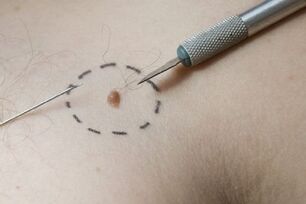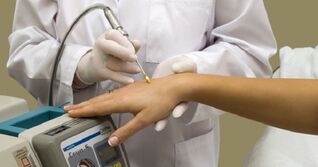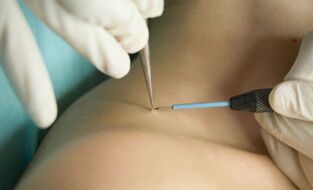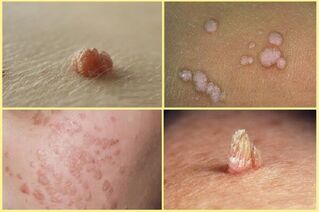Warts - benign formation on the skin and mucous membranes that occur due to the activation of the human papillomavirus.
They don't look aesthetically pleasing and are often complicated. A person wants to get rid of them, but doesn't know how.

Should we remove accumulation?
It depends on the size of the papillomas, their nature and the person's age. But more often than not, the answer is completely positive, because the warts are contagious and can be passed on to others. Perhaps self-infection is self-infection.
First, cancer infectiousness manifests not only through direct contact with them, but also when sharing household utensils, toiletries or simplyis touching the places the sick person has touched. For example, a bus rail.
Second, the location of warts can be in the most vulnerable places - neck, feet, armpits, groin. These places are more often rubbed, squeezed and touched by clothing. Then, it is full of malignancy, bleeding, overgrowth.
Third, casts can increase in size and number, which causes aesthetic problems. This phenomenon can be called a territorial invasion of a wart.
Important! Not always, but it is possible a degeneration of the warts into a malignant tumor, an incurable skin cancer.
Key Misconceptions about the Dangers of Surgery
Early treatment and warts treatment is the best option. It will save you a lot of time, effort and money. Although 70% of warts may go away naturally after 2 years of existence, they are able to return with the same success and, moreover, in new locations.
The fears of many people in contact with surgeons are related to the fear of surgery, complications, recurrences, and possible pain during surgery. They are completely unfounded, because modern methods provide excellent pain relief, and many do not require anesthesia.

There are still opinions that further exposure to a surgeon's knife will increase the development of acne. This is the deepest illusion - surgical intervention stops the spread of the virus and stops the warts from growing. Luckily, there are enough methods for this.
Strangecan be called patients who are not afraid to use traditional homegrown methods and refuse qualified help. The experience and qualifications of a doctor are of course very important, but a good surgeon is not uncommon.
And one more help - stop relying on cosmetologists and run to them with warts. They just don't get adequate medical education.
Modern method
There are newer or older delete methods. Each of them has its own pros and cons. In addition, the effect depends on the size of the wart, the location and depth of the pimple.
All methods can be grouped into 3 groups: hardware, surgery and chemistry. Alternative treatment has more to do with methods of physical (mechanical) action.
When you contact the doctor can suggest the best option, in his or her opinion, but the final choice is made by the patient himself.
Preliminary advice is also needed as not all methods you have chosen will be suitable, as there are contraindications and limitations.
Laser Treatment
Laser method can be called universal. Out of all the methods, he is leading now. With the help of a laser, you can get rid of warts in the toughest, thinnest, most painful spots. It also has the advantage that it leaves no scars. The beam is safest and least traumatic.

The efficiency is so high that just one process is enough. The essence of the thermal effect on warts is based on temperature. Healing quickly, leaving no scars and complications.
Other pluses of the laser:
- the patient feels no pain;
- does not require anesthesia;
- completely removed;
- fast - takes 1–2 minutes. Relapses are only possible in 20% of cases.
The burning that leaves behind a burn will heal after 2 weeks. The skin may lighten temporarily and go away on its own after 3 weeks.
Cauteization with liquid nitrogen
Cryodestruction is the low-temperature freezing of wart using liquid nitrogen. Duration - 30 seconds. Freezing leads to death of growth tissues. When exposed to freezing, the papilloma thickens and turns white. After a minute, she turns red and swollen.
A gray liquid bubble will appear at home. In a week, it breaks apart and forms a crust. The crust heals and falls off after 2 weeks.
There is still a pale pink spot left, and gradually its color will become the same color as the skin. The formation will disappear within 2 weeks and a pale pink spot appears at the site of removal, gradually disappearing.

Pros:
- is painless, no scarring, and no anesthesia is required;
- had no infection or bleeding.
The only downside is that there is no way to control the depth of the impact.
On the soles of the feet, the impact lasts about 1 minute. The process can be repeated on the base up to 5 times. Minus point - long wound healing.
Capacitors
Electrocautery of the wart using high frequency currents. It concentrates in a ring that cuts off the wart. The heating temperature is about 80 degrees.
No bleeding due to simultaneous clotting. Need local anesthesia. One big plus of this approach is that it prevents the virus from spreading further. In addition, this method is quite economical and effective.
The surrounding tissue must be covered and skin disinfected. There is also a scaly stage. It disappeared within a week. Then, a transparent, almost imperceptible scar remains, but usually a bright spot. There is no relapse!
Applying radio wave therapy
The method is considered to be equally efficient as the current. The physical exam is performed using special equipment, the doctor will help you choose the right type. This is a radio transmitter, its high frequency electric waves don't touch the wart, but cut off completely.

The essence of this action is that the wart cells contain liquid, which expands with radio waves, the warts swell and burst. The work is performed with a special tip that resembles a ballpoint pen tip.
No scarring or infection. The only downside is the pain of the procedure, for this, the formulation is pre-lubricated with an anesthetic. Healthy cells are not damaged. The exhaustion process took about 20 minutes.
Recommended! At this stage, the crust should not get wet and peel off! She disappeared herself for a week.
Surgical resection
Surgical excision is a traditional, classic method performed with a scalpel. It is not commonly used now. Methods of damage and relapse, scarring.
Risk of damage to nearby tissues, potential for infection. But it cannot be replaced if the warts are large. Local anesthetic with a special spoon, after the incision, the wart will be curled away. The seams are aesthetic, they are removed after a week. The scar is still about 3 mm in size, and it fades with time.
Chemical burning process
Formation is impacted with acids or alkalis. After a certain time, rinse it off. There are usually at least 6 processes to achieve an effect. There is a burning sensation or a tingling sensation during that time. The wart dries up and falls off.

Cons:
- there is a risk that the virus will spread further and infection cannot be ruled out;
- healthy tissue is often damaged;
- can be scarred, which takes about 10 days to heal.
This method is only used if other methods are not possible.
Pros and cons of different methods, which one is better
Any method of removal has pros and cons, there's no ideal choice. Today, the most popular methods are: laser therapy, cryotherapy, electrocautery, radio waves, scalpels - in descending order of frequency. The cost of the first 3 methods is practically in the same price range.
The laser is the frontrunner: it's nowhere to be reached, it's safe, fast and painless. Cryodestruction is considered to be the second most effective, but with it the ability to control depth of exposure, so recurrence is possible.
And one more conclusion - lasers can only remove 1 small formation in 1 treatment.
Cryotherapy can be used for papilloma, when up to 40 tumors can be removed in one treatment. But here the doctor's experience is of great importance to quality.
How position and type of growth affect my choice of technique?

There are 4 types of warts:
- vulva- small nodule, usually growing on fingers, toes, back of hands;
- flat- typical in teenagers, they take the form of convex spots; these include plantar (thorns);
- threadlike (acrochords)- thin, elastic growths on the legs, appearing on the face (eyelids, lips) and neck;
- genital warts - usually localized on the mucous membrane of the genitals; like cauliflower in appearance.
These 4 categories are derived from viruses and belong to real warts.
But there are also keratosis due to old age, due to dysfunction of the skin. They do not require treatment, just observe. Cryotherapy can be used if desired.
The doctor recommended resection, but in the end the patient made a choice. The choice of method depends on the type of warts: small formations can be safely removed with aradio wave "knife" or liquid nitrogen.
Radio Knifecan be applied on face and neck, feet and palms, groin. With papilloma on the eyelids, it is not used. They can use either laser or liquid nitrogen.
Freezingis also used on the arms and feet (on the sole), papillomas on the neck. The cryo method can be called universal. It's safe.
Laser- removes any warts on any part of the body, including under the fingernails.
Surgical methodis applicable to cases growing on the oral mucosa.
Clotting treatmentis recommended for flat and coarse warts. Can even be applied on the face. With a large lineup, the impact is negligible. Also, electric knives are not used for warts, as they often have deep roots and they are very dense.
Important! Only plants growing in the hospital should be removed.
The chemical method works well for plant diseases, flat and pointed. The physical methods are inefficient compared to it.
What form of formation removal do you recommend?
Of course, customers choose according to their abilities. But he must be guided by the opinion of a doctor in order to make the correct decision. Specialists prefer complex (combination) treatment of warts, in which the foremost position belongs to removal.
In addition, treatment will include taking drugs with antiviral activity. Although the HPV virus (human papillomavirus) is not 100% curable and in many respects its activation depends on the immune status, the virus can be delayed, "sinking. go to sleep "and the remission can last.
In addition to antivirals, immunomodulators are used for this purpose. First of all, this is a group of interferons.
Doctors do not treat folk methods enthusiastically, because they are not treated by a doctor, it is not safe. It is damaged with surrounding tissue, infection, inflammation. Children under 5 years old should not remove warts by any means.














































































